Begonias Pot are a great option for pot gardening. They work well as filler plants. Plant containers on the edges of entry stairs, along paths, and in gloomy spots where a splash of colour would brighten your garden’s appearance. Make sure there is a drainage hole in the container you select. Overwatering begonias can quickly kill them.
Will you be adding begonias to pots or containers this season but don’t know where to start? Begonias may thrive in both pots and containers with the correct care. This post has the greatest tips for container gardening with lovely begonias this season!
Pick the Right Pot
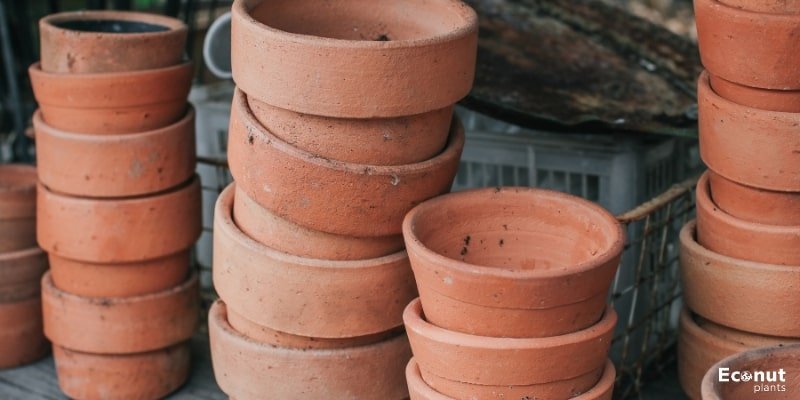
The pot that you intend to plant your begonia in has a significant impact. Please ensure that the bottom of the item has drainage holes. If not, use a drainage-equipped plastic liner pot. Begonias are averse to damp circumstances. They’re going to rot.
It’s ideal to have a large container filled with flowers and other plants. Additionally, a tiny pot with only one begonia in it looks fantastic. Remember that bigger pots require less watering each week than smaller ones.
It is irrelevant what kind of pot it is. Metal, ceramics, terracotta, plastic, and so forth are all acceptable. Select a container that you find appealing and enjoy using. Perhaps experiment with a pot colour that will contrast with the begonia’s colour.
Use Proper Soil
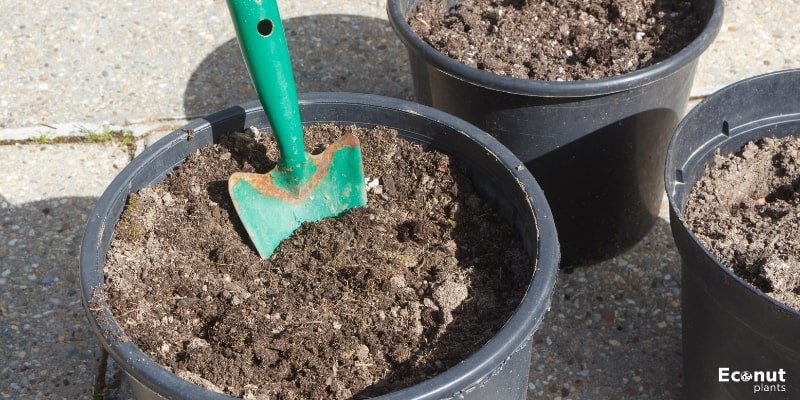
In the garden, begonias require loose, fluffy soil that drains well. They’ll need the same soil in pots. Good news! Potting soil will work just fine for begonias; special soil mixes are not necessary.
Get Black Earth merchandise from No Garden Centre. It is intended for use in gardens, even though it is less expensive. It is very heavy and improperly drains into containers. Your containers of begonias will eventually become wet and rotten.
Water Regularly

Begonias are my favourite because they can withstand some drought. For instance, lobelia may turn brown and crispy when you get home if you neglect to water it before leaving for work. Begonias need water for extended periods, but if you neglect them one day, they should be alright.
I prefer to soak the container completely when I water it. If it’s a tiny container, I’ll submerge it in water on a plate or tray and let it absorb the water from the bottom. There is less risk of diseases and pests getting onto the foliage if less water is applied to it.
Pick the Right Location

When it comes to ground gardening, I usually suggest to my clients that they buy a plant or flower they love, and then we will work together to find a good spot for it. Gardens usually have sections of sun, shade, and every shade in between.
It grows best in protected locations, such as begonias. Begonia containers look great on front porches, shaded patios, and under pergolas.
Begonias are not resistant to harsh weather conditions such as heavy winds, hail, or rain. If any of these conditions apply to your pots, you may need to revaluate your planting schedule.
Select a type for shade or sunlight
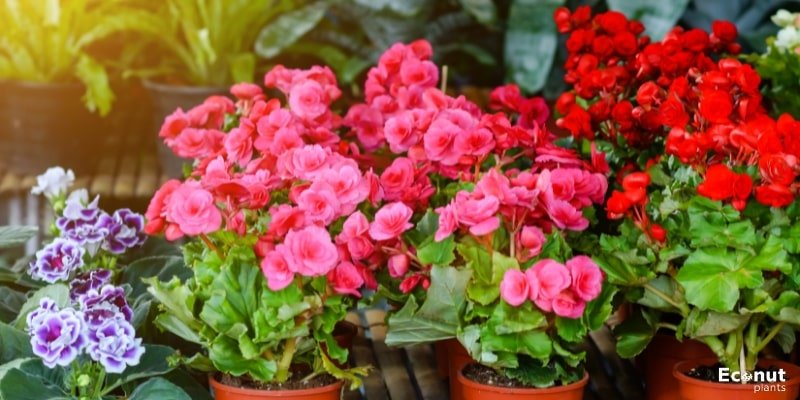
Most people consider begonias to be shade perennials, which they are. Begonias do reseed themselves yearly if planted in the right hardiness zone and receive enough shade. Certain types, nevertheless, can withstand more sunlight. Here’s a brief explanation of begonias and their needs for sun and shade.
Part shade/sun
Begonias truly thrive in this area. Part shade is preferred by tuberous begonias, the ones with the huge flowers. They will become fried from too much sun. Excessive shade will hinder their ability to blossom. Containers that are partially shaded or partially sunlit will support begonias of all kinds.
Full shade
Many begonia types are genuinely intolerant of full shade. This equates to less than 4 hours of sunshine per day. Try Rex Begonia types if this is the state of your pots. These begonias are renowned for their exquisite, multicoloured leaves with fascinating patterns.
Sunlight is what flowers need to grow and flourish. Rex Begonias aren’t particularly exceptional, so even if they blossom, it’s not a huge deal to keep them in shaded areas where they don’t flower. Although they won’t grow quickly, this is typically not an issue in a container.
Full sun
Begonias come in a few types that can withstand full sun. Wax begonias require full light, especially those with darker foliage colours. Full sun is ideal for cocktail mix begonias, which also look fantastic in a container.
Plant them correctly
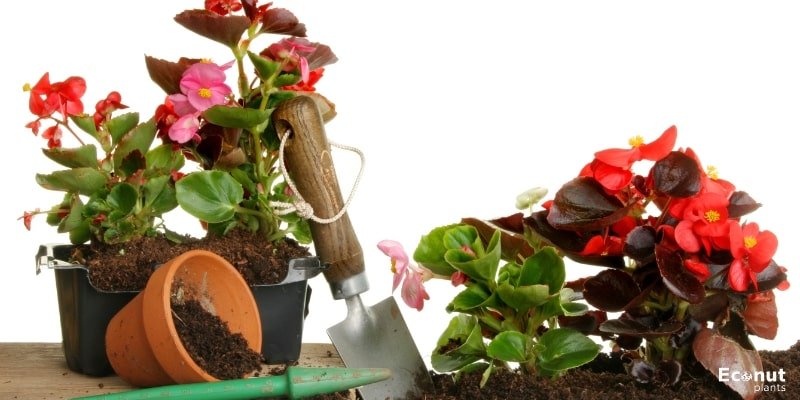
The performance of begonias might vary greatly depending on the type of container they are planted in. Begonias should have their roots fractured before placing them in a container. It is especially important if the plant is root-bound.
There will be dirt and debris everywhere after the water recedes. Furthermore, water won’t be able to seep in. Orient your begonia’s petal so that it lines up with the pot’s edge. To keep the water from spilling over the edge of the pot, I’m going to compact the dirt a little bit.
Use Fertilizer

The importance of fertilizing containers cannot be overstated. Because garden pots are small spaces, plants’ roots have less room to absorb nutrients than they have in the ground. It’s critical to take care of them. Thinking too much about the fertilizer is not required.
You can use a 20-20-20 all-purpose fertilizer. Another option is a 15-30-15 that promotes bloom. I ovulate every two weeks.
After the container has been saturated, mix the fertilizer and water. Over-fertilization is the cause of burning plants. Furthermore, take care that the diluted fertilizer combination does not come into contact with the foliage. The soil is the aim.
Never turn off your basic maintenance
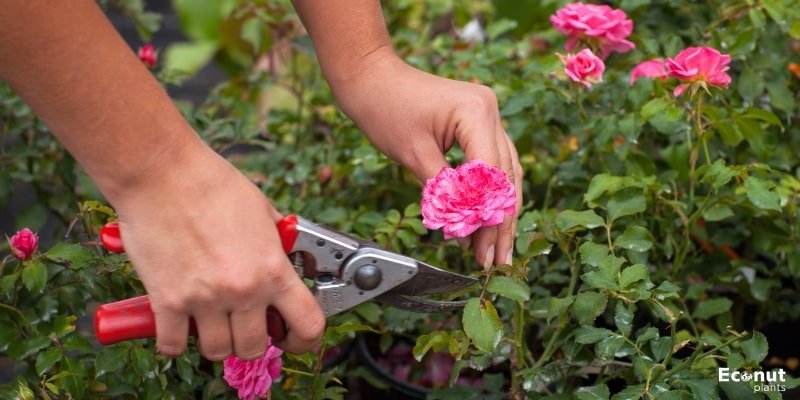
Nothing about a plant needs to be neglected. Begonias don’t cause any problems. They do require some maintenance, though, to sustain their gorgeous appearance in containers.
Compared to other plants, container plants have a smaller growing area and are grown in environments where they are likely to be observed up close. Therefore, taking a little time to maintain them does matter.
Eliminate any blooms that appear to be turning brown. To maintain organization, I will also be trimming back plants. For example, if you plant Senecio ivy next to your begonias, you may need to trim it away from them so it doesn’t overwhelm them.
Troubleshoot When Needed
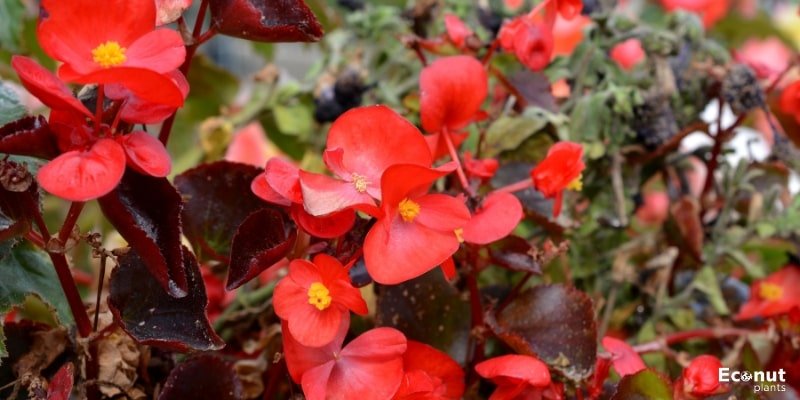
You might be able to easily remedy your begonias’ poor performance in pots. I’ll go through some of the typical issues begonias face and possible causes.
No flowers
A begonia without flowers is usually the result of insufficient sunlight. If at all feasible, try shifting the container to an area with more sunshine. Conversely, it may indicate that fertilization is required. Particularly if they are in a small container with limited soil available for absorbing nutrients.
Crispy leaves
This usually stems from one of two sources. Excessive solar exposure. Check the sunlight conditions in your container. If it is exposed to direct sunlight for six hours or longer, it can be too much. It could also mean that you are submerged.
Look into your container with your finger. Make sure it’s not fully dry. It must be slightly wet, but not completely saturated. Fertilizer burn is not always the reason. If you think this is the case, then fill the pot with water. After removing the crispy leaves from all sources, address the current problem.
Yellowing leaves
Yellowing foliage can sometimes be a sign of overwatering. It ought not to feel like sloppy rain. Being uniformly moist, akin to a damp sponge, is preferable.
It can also mean that the dirt is too heavy. In actuality, the problem is probably overwatering. Dense soil cannot be drained. Verify that the soil in your containers is potting soil and not garden dirt.
Overwinter in Cold Climates
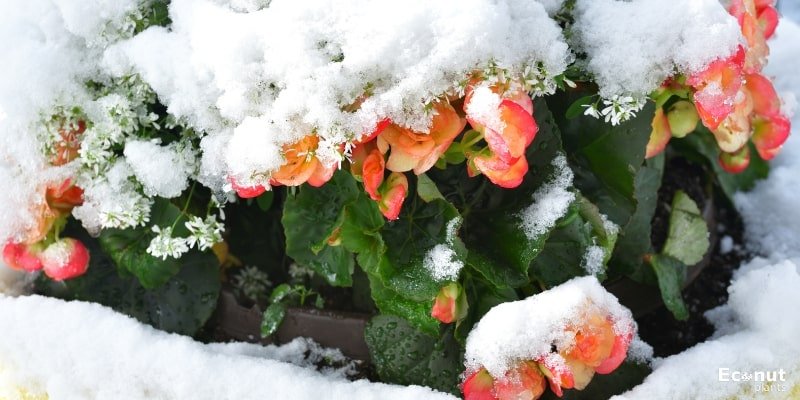
In terms of the mechanics of growing container begonias, overwintering will be the last item I cover. Many people have begonias indoors all year round, as they are popular houseplants. Magnificent white houseplants known as angel wing begonias are commonly kept inside.
Proceed with the utmost caution if you decide to overwinter your begonias. You should not bring them indoors with any nearby plants if they show signs of disease or infestation. You won’t regret allowing them into the house, I assure you of that.
Pick Your Colors Wisely

The most fun part is designing the perfect container configurations. Examine the architectural elements of your house Consider including some bright yellow begonias in your front container arrangement to make things pop.
Look at the hue of your pot. Something eye-catching would be a turquoise vase filled to the brim with many deep pink begonias.
Now that I’ve provided you with some ideas, you can also choose to ignore all those rules and just buy the ingredients you desire, mix them, and make a tropical punch. In the process of creating something visually pleasing, have fun.
Plant Complimentary Companions

Begonias are a great addition to any container design, but I prefer using them in small terracotta pots filled to the brim with a single plant. Begonias go well with certain types of plants. Here’s an example of some of my top picks. But there are countless combinations and alternatives.
Coleus
Begonias and Coleus make the best friends. When paired with begonias, the vivid and distinctive colour patterns on some coleus truly stand out and blend in. Growing coleus is also quite simple.
Try putting on top Fandango begonias and Wizard Rose coleus for a gorgeous pink and white colour combo. You can create a stunning container by adding a palm or an alocasia to act as the thriller and golden Lysimachia to spill out.
Palms
Majesty palms, which are available practically everywhere—garden centers and hardware stores—are my favourites. They are typically not very pricey. I adore using them as a dramatic plant with begonias planted underneath.
Golden Lysimachia
It has to be said that this is one of my favourite plants to spill. Beautifully spilling out of containers, it has dazzling golden foliage. For a container that looks well-finished, tuck it behind the begonias.
Elephant Ear Alocasia
Elephant ears are an excellent thriller plant, much like palms. These leaves are enormous, arrow-shaped, and gorgeous. For a container design with a tropical feel, place begonias at the bottom.
Creative with Hanging Baskets
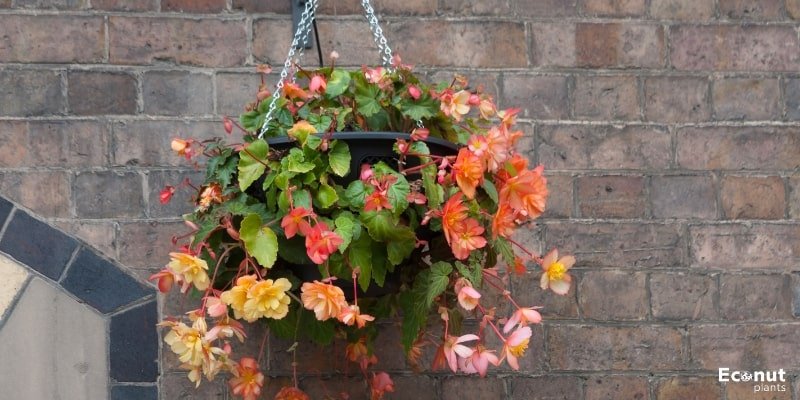
Hanging baskets are a great place for begonias. Hanging begonias are the best option. These varieties’ blossoms drop to the ground. Bossa Nova Rose, Angelique, and Dragon Wing Red are a few variants.
Hanging baskets made of wax begonias are also excellent. After that, add dirt to it. Using tiny incisions gently place the wax begonias into the coconut coir’s bottom. Then add more wax begonias to the top of the container. It will develop into a lovely, compact ball of hanging begonias as it grows.
Conclusion
My favourite flowers for containers are always begonias. A container set appears to be a favourable habitat for practically all of the types that exist.
It doesn’t truly mean you are limited if your options are containers with shade conditions. Engage in creative play with the various begonia kinds and combine them with other plants that prefer shade to create a striking container arrangement.

